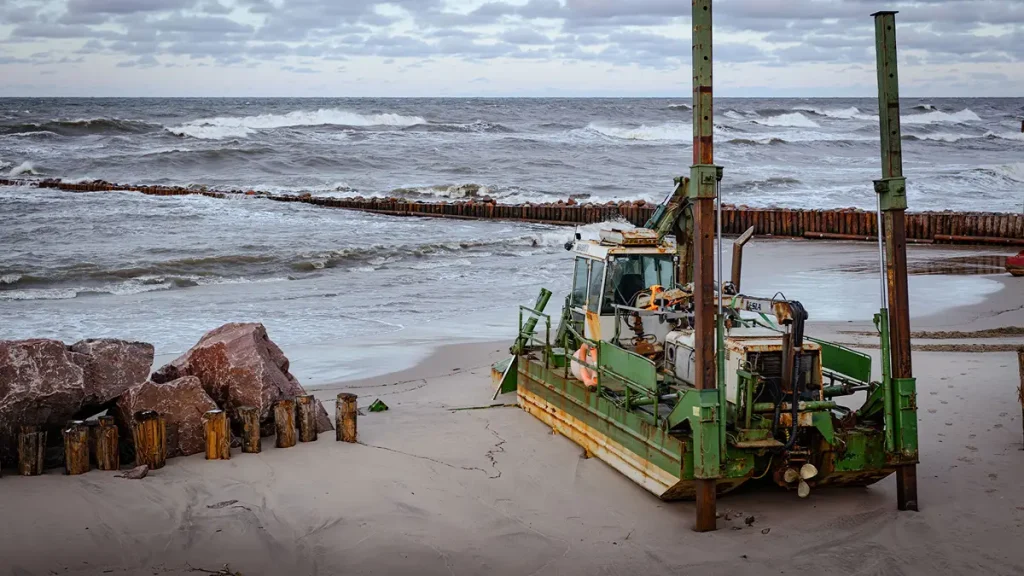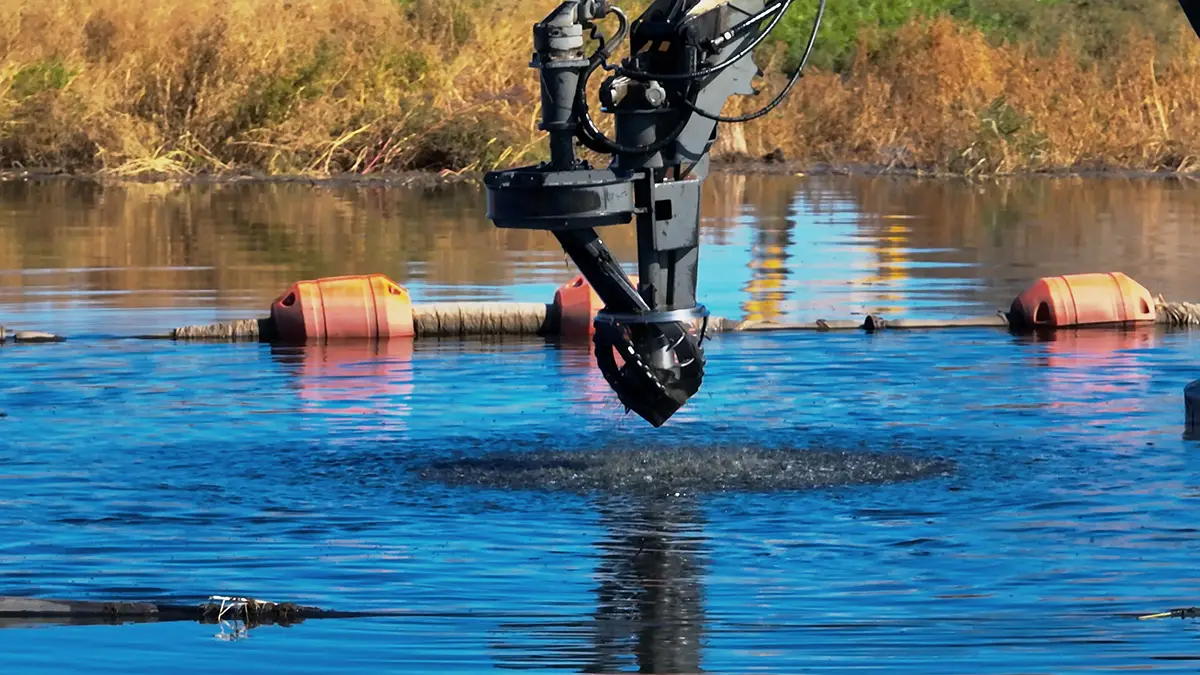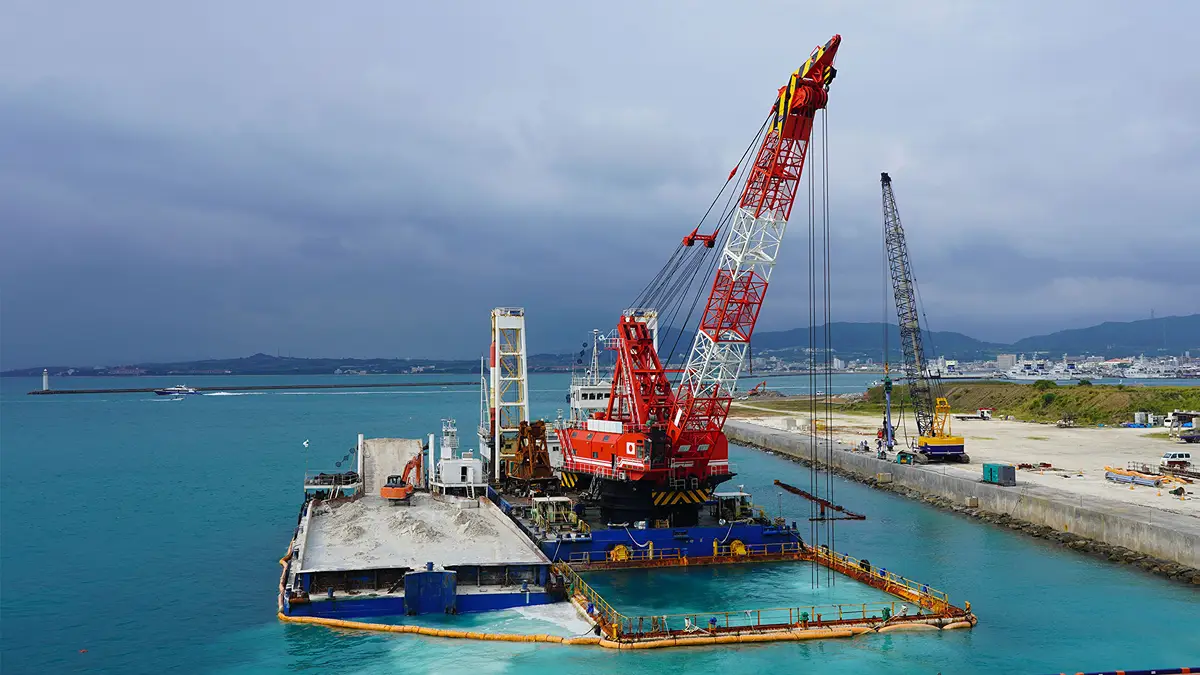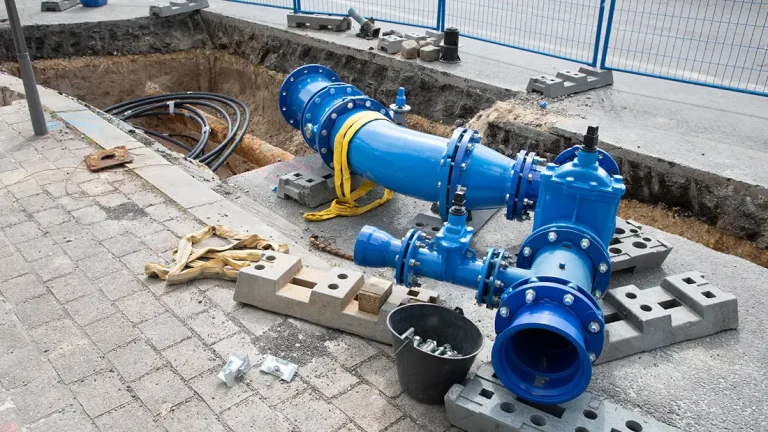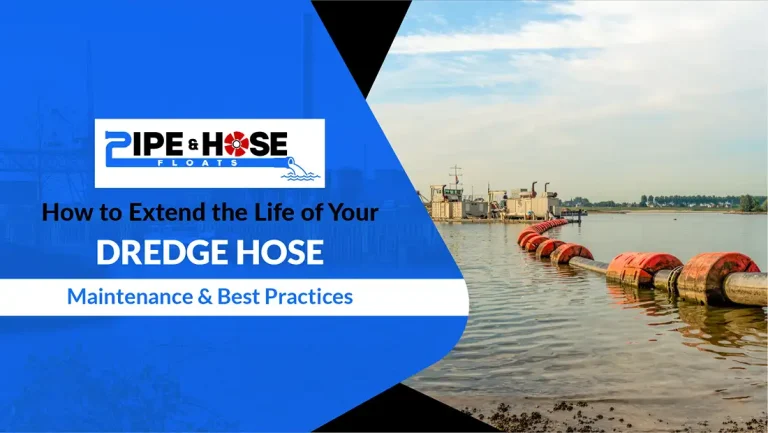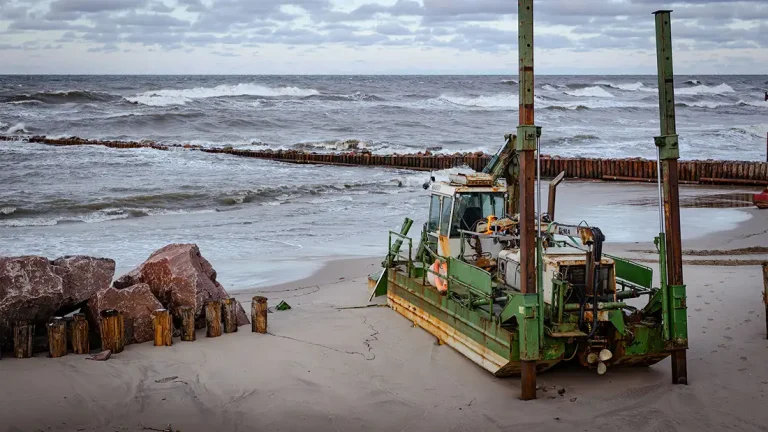Why Dredging Machines Matter for Marine & Inland Projects
Dredging plays a crucial role in maintaining, restoring, and enhancing aquatic environments. From clearing sediment build-up in harbors to mining sand in riverbeds, the dredging machine is vital for numerous marine and inland operations. These machines are designed to excavate underwater materials and transport them to the surface or other locations, making them indispensable for both commercial and environmental projects.
Selecting the right dredging machine is essential for ensuring operational efficiency and achieving project goals. Whether you’re working in a shallow inland river or deep-sea harbor, there are specific types of dredger machines tailored for each scenario. This article explores a dredging machine, highlights its core features, and delves into its best use cases, especially for marine and inland projects. It also offers a close look at the increasingly popular sand dredging machine, built specifically for sand mining and reclamation activities.
What Is a Dredging Machine?
A dredging machine is a mechanical or hydraulic device that removes sediments like sand, gravel, silt, and debris from the bottom of rivers, lakes, harbors, or seas. These machines are used extensively in civil engineering, port development, flood management, mining, and environmental restoration.
A dredger machine typically includes components such as a suction or cutting mechanism, a transport system, and sometimes storage facilities. Some machines use suction to extract materials, while others cut, scoop, or agitate the sediment before transporting it.
When dealing specifically with sand removal, the sand dredging machine is the equipment of choice. It is optimized to handle sandy material, whether loose or compacted. With powerful suction systems and sometimes cutting attachments, the sand dredging machine is used in applications like beach nourishment, riverbed sand mining, and land reclamation.
These machines have revolutionized how sediment and material are managed in aquatic environments, making once difficult or impossible more feasible, cost-effective, and environmentally friendly.
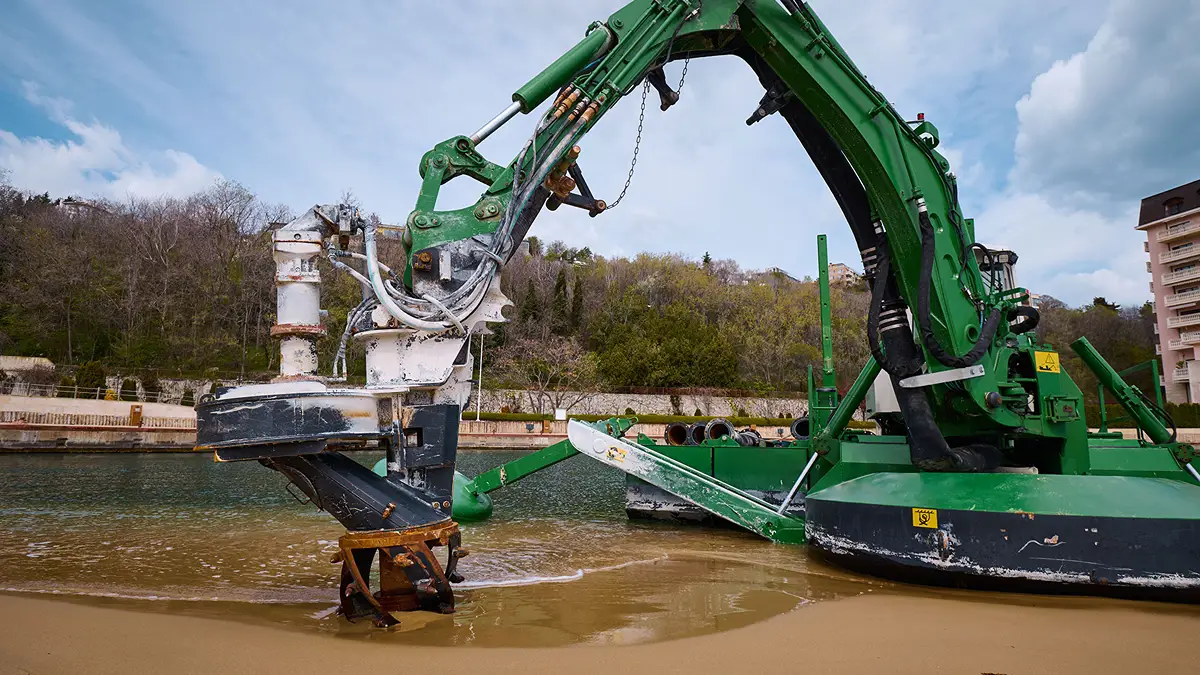
1. Cutter Suction Dredger (CSD)
The cutter suction dredger is the most powerful dredging machine. It features a rotating cutter head at the front of a suction pipe. As the cutter head breaks up compacted sediment or soil, the material is sucked up and pumped through a discharge pipeline.
Key Features
- Mechanical cutting combined with hydraulic suction.
- Can dredge very hard materials like clay and rock
- Suitable for deep and wide-scale excavation
Common Use Cases
- Land reclamation projects
- Deepening shipping channels
- Harbor and port construction
The dredger machine excels in projects requiring aggressive excavation and is often used in marine and large inland projects. Its long reach and power make it ideal for large-scale operations.
In many coastal engineering projects, CSDs are paired with booster pumps to transport dredged material over long distances. This makes them indispensable in constructing new islands, extending shorelines, or restoring eroded beaches.
With technological improvements, the modern dredging machine now features automated controls, GPS mapping, and real-time monitoring, further enhancing its efficiency and reducing human error.
2. Trailing Suction Hopper Dredger (TSHD)
A trailing suction hopper dredger is a self-propelled dredger machine equipped with one or more suction pipes. These pipes drag along the seabed, collecting material which is stored in a hopper on the vessel. Once full, the dredger can transport the material and deposit it at designated locations.
Key Features
- High mobility and capacity
- Onboard storage (hopper)
- Controlled disposal options (rainbowing, pumping, or bottom doors)
Use Cases
- Maintenance dredging in ports
- Capital dredging of sea routes
- Beach nourishment
This type of dredging machine is widely used in open water environments and is ideal for projects that require mobility and flexibility. TSHDs are often used to maintain harbor depths, ensuring uninterrupted navigation for commercial ships.
The advanced models of TSHDs are capable of operating in rough seas and harsh weather conditions, making them highly suitable for offshore dredging. With efficient sediment handling, this dredger machine is an integral part of marine infrastructure development worldwide.
3. Bucket Dredger
The bucket dredger is a mechanical dredger machine that uses a series of buckets mounted on a continuous chain or wheel. The buckets dig up material from the bottom and transport it to the surface, typically into barges or onshore.
Key Features
- High precision
- Effective in hard or compact materials
- Low turbidity during operation
Applications
- Urban canal dredging
- Inland waterways with rocky beds
- Environmental cleanup
Although not as fast as hydraulic systems, the bucket dredging machine remains a reliable choice when precision is essential. It can remove contaminated sediments with minimal spread, making it suitable for ecological restoration projects.
Bucket dredgers are particularly useful in shallow and confined areas where the sand dredging machine or large TSHDs might not operate effectively. Their controlled operation also reduces the chance of disturbing underwater ecosystems.
4. Backhoe Dredger
A backhoe dredger is essentially a land-based excavator mounted on a floating platform. It uses an articulated arm with a bucket to scoop up sediments and deposit them nearby.
Key Features
- High excavation power
- Suitable for nearshore and shallow waters
- Stationary operation
Best Use Cases
- Rock dredging near piers
- Urban waterway projects
- Marina development
This type of dredger machine is best for precision operations. It’s widely used in urban infrastructure and civil works, especially when underwater pipelines, cables, or bridge foundations are involved.
Inland projects often benefit from using a backhoe dredging machine because they’re easy to transport and deploy. Their ability to operate in tight spots makes them a go-to solution for city-based and environmental dredging.
5. Jet-Lift and Air-Lift Dredgers
Unlike mechanical systems, the jet-lift and air-lift dredging machines use fluid dynamics to raise sediment. Jet-lift dredgers use high-pressure water jets to create a vacuum, while air-lift dredgers inject compressed air to lift sediment through vertical pipes.
Key Features
- Minimal mechanical wear
- Low energy requirements
- Gentle handling of sensitive materials
Best Use Cases
- Scientific and archaeological dredging
- Coral reef restoration
- Soft sediment removal
These types of dredger machines are limited in capacity but offer unparalleled environmental sensitivity. When working around protected habitats, endangered species, or fragile archaeological sites, air-lift and jet-lift systems are preferred.
Because of their gentle operation, these machines are also used in research settings where water clarity and sample integrity are essential.
6. Amphibious and Multipurpose Dredgers
Amphibious dredgers are adaptable machines capable of operating in both land and water. They feature pontoons and tracks that allow them to travel across wetlands, marshes, and shallow waters.
Key Features
- Operates in swampy terrain
- Can switch between attachments (buckets, pumps, cutters)
- Versatile and mobile
Applications
- Wetland recovery
- Shallow river dredging
- Agricultural water management
This category of dredging machine offers unmatched flexibility. It’s especially effective in inland areas prone to flooding or where seasonal water levels vary greatly.
Because they can handle a range of materials and environments, amphibious dredger machine is often used for multipurpose projects—from desilting irrigation canals to preparing land for agriculture or construction.
Sand Dredging Machine: Purpose and Use Cases
A sand dredging machine is specialized equipment tailored for the removal of sand deposits in aquatic environments. These machines are used in various industries, including construction, mining, flood control, and coastal protection.
What Makes Them Unique?
- Powerful suction or cutting heads
- Built-in agitators or jet nozzles
- Adaptability to both marine and inland projects
Typical Use Cases
- Riverbed sand mining
- Port basin deepening
- Reclamation and backfill
Unlike a general-purpose dredging machine, a sand dredging machine is engineered specifically to handle sandy substrates. It reduces clogging risks, maximizes throughput, and performs efficiently even in abrasive conditions.
Smaller portable versions are ideal for inland sites, while larger models serve marine sand mining operations. Due to the growing demand for sand in construction and infrastructure, the sand dredging machine market has seen significant growth in recent years.
Marine vs. Inland Projects: Which Machine Works Best?
When choosing the right dredging machine, it’s essential to consider whether your project is marine-based or inland. Each environment presents unique challenges.
Marine Dredging Projects
- Often require TSHDs or CSDs for large-scale, deep operations
- Must deal with waves, tides, and saltwater corrosion
- Typically involve port development, offshore mining, or land creation
Inland Dredging Projects
- Prefer, an amphibious or backhoe dredger machine.
- Shallow depths and sensitive surroundings are common
- Used for river cleanup, lake maintenance, or flood prevention
In both cases, a sand dredging machine is employed where sand is the primary material. In inland river mining, these machines provide precise excavation without disturbing the environment. In marine applications, they efficiently move large sand volumes for coastal restoration or industrial needs.
How to Choose the Right Dredger Machine
Selecting the appropriate dredger machine is a critical decision that can make or break the success of your dredging project. Whether you’re dealing with coastal expansion, riverbed maintenance, or sand mining, the type of dredging machine you choose must align with your project’s specific conditions, material composition, scale, and environmental considerations. A mismatched machine can lead to inefficiencies, cost overruns, delays, and even environmental damage. Below are the key factors to guide your selection process.
1. Material Type
The type of material to be excavated plays a pivotal role in determining which dredging machine is right for the job. Dredging operations may involve a variety of materials, including loose sand, sticky clay, gravel, compacted silt, or even submerged rock.
For projects where the primary material is sand, a specialized sand dredging machine is the most suitable choice. These machines are engineered to handle sandy substrates effectively, ensuring high output while reducing wear and tear. On the other hand, if the material is rocky or hard-packed clay, a cutter suction dredger machine or a backhoe dredger with cutting attachments will offer better performance.
Choosing the wrong dredger machine for your material type can result in clogging, machine damage, or drastically reduced efficiency.
2. Water Depth and Site Accessibility
The depth of the water and access to the dredging site also significantly impact equipment selection. Deep marine environments, such as ports and offshore channels, typically require a heavy-duty dredging machine like Trailing Suction Hopper Dredgers (TSHDs) or Cutter Suction Dredgers (CSDs). These machines are built to operate in deep water, where they can excavate and transport materials over long distances.
Conversely, in shallow or inland water bodies—such as small rivers, lakes, or marshes—an amphibious or backhoe dredger machine is often more appropriate. These machines are easier to maneuver and can work efficiently in confined or low-depth zones where larger equipment may not be feasible.
For sand removal in shallow areas, a portable sand dredging machine offers the flexibility and ease of deployment necessary to get the job done without the need for extensive setup or support infrastructure.
3. Project Scope and Duration
Another crucial factor to consider is the overall size and duration of the project. If you’re managing a long-term or large-scale capital dredging initiative—like port expansion or land reclamation—a high-capacity dredger machine with advanced automation features will deliver better long-term value and productivity.
On the other hand, for short-term or localized tasks—such as canal cleaning, pond desilting, or emergency flood mitigation—a compact, modular dredging machine may suffice. These smaller machines are often easier to mobilize and more cost-effective for projects with limited timeframes.
Choosing a machine that aligns with your operational timeline helps avoid underutilization or excessive wear.
4. Environmental Considerations
In today’s regulatory climate, the environmental impact of dredging cannot be ignored. Projects near sensitive ecosystems—such as wetlands, coral reefs, or conservation zones—must comply with stringent environmental guidelines. In such cases, a low-impact dredger machine, like air-lift or jet-lift systems, is highly recommended. These machines minimize sediment disturbance and turbidity, helping maintain water quality and aquatic life balance.
Even in less sensitive areas, factors like sediment containment, noise levels, fuel emissions, and water quality degradation must be evaluated before selecting a dredging machine. Responsible choices help ensure regulatory compliance and long-term sustainability.
5. Budget and Available Resources
Finally, your budget and resource availability play a significant role. Large,a high-tech dredger machine may offer unmatched efficiency but come with higher capital and operational costs. If your project doesn’t require continuous or high-volume dredging, investing in such equipment might not be financially justifiable.
In these situations, renting a dredging machine or opting for a modular design can be more practical. Similarly, for sand extraction, a mid-sized sand dredging machine often delivers an excellent return on investment due to its relatively low cost, easy maintenance, and strong output capabilities.
Choosing the Right Dredger for Your Site Conditions
Selecting the right dredging machine isn’t just about power—it’s about precision, efficiency, and environmental responsibility. From harbor expansion to riverbed sand extraction, choosing between a dredger machine and a specialized sand dredging machine can define the success of your project.
Whether you’re working offshore or in a rural canal, understanding your site, materials, and goals is essential. With the right equipment, you’ll not only save time and costs but also achieve cleaner, more sustainable results.

